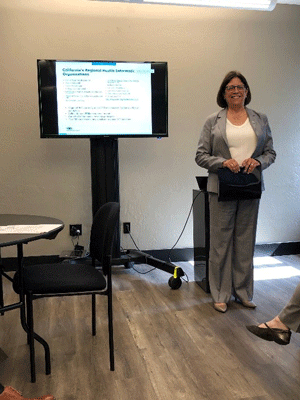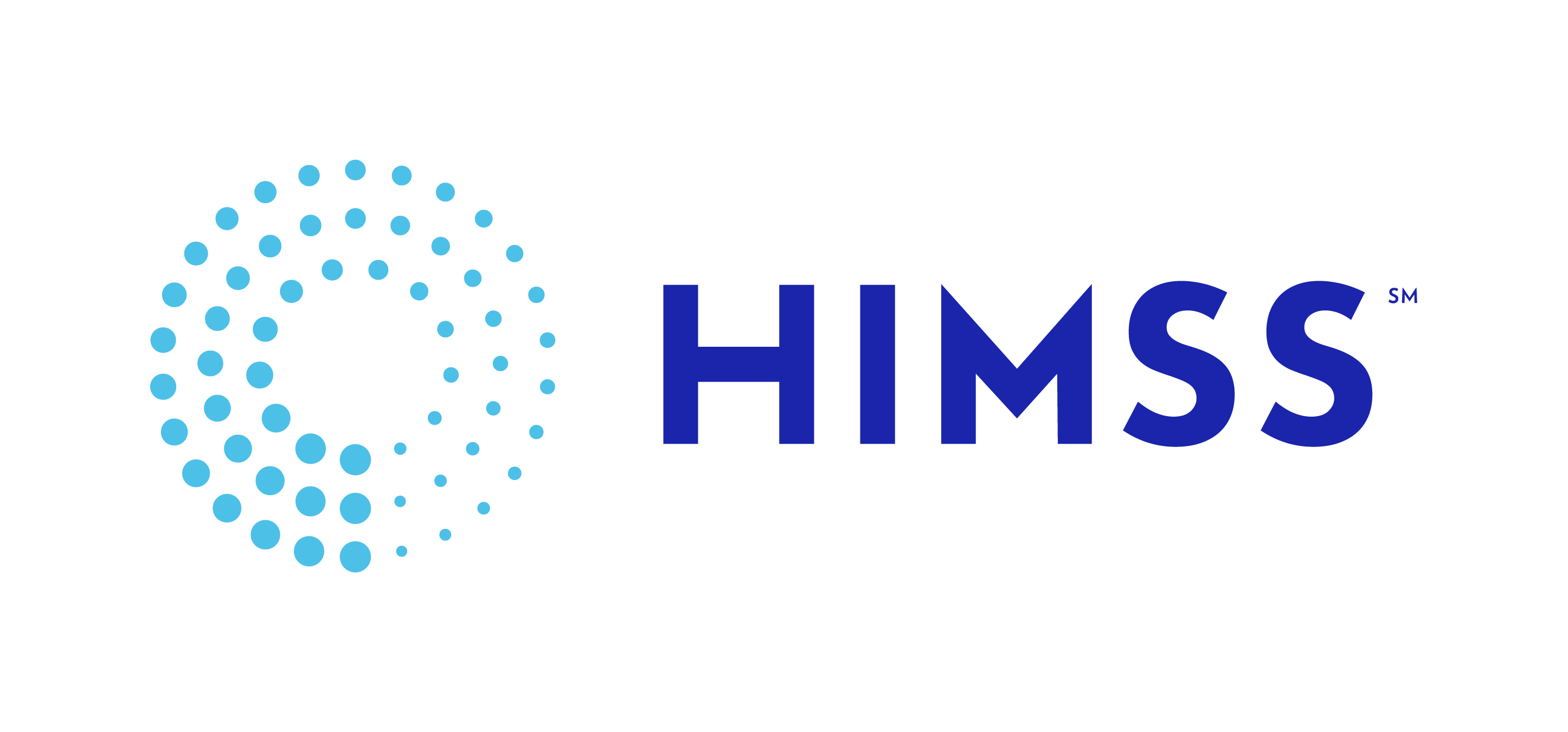Advocacy Dispatch | Vol. 3 | 6.12.19
TAKE ACTION: Data: Elemental to Health
HIMSS is leading a new campaign with the Association of Public Health Laboratories (APHL), Council of State and Territorial Epidemiologists (CSTE), and National Association for Public Health Statistics and Information Systems (NAPHSIS) to support legislative efforts in the House and Senate to improve public health data systems – Data: Elemental to Health.
Our nation’s public health data systems are in need of modernization to eliminate outdated, paper-based, and sluggish processes. New appropriations and authorization legislation now being considered in Congress would help establish an interoperable, integrated public health surveillance enterprise for CDC, state, territorial, local, and tribal health departments.
We need your help to build the public health data infrastructure of the 21st Century!
The goal is to generate a coordinated groundswell of outreach to educate Members of Congress about the need to improve public health data systems. The more people that voice their support for an interoperable public health surveillance enterprise, the greater impact we will have.
Taking action is simple and will take you less than five minutes but will have a huge impact. A prewritten letter has been developed—with the option to customize or write your own—that will be automatically sent to your two senators and one representative in Congress through the HIMSS Legislative Action Center. The letter stresses the importance of improving the nation’s public health surveillance infrastructure.
Thank you for taking the time to take action. If you have any questions, please do not hesitate to contact Samantha Burch (sbburch@himss.org) or Josh Roll (jroll@himss.org) on the HIMSS Congressional Affairs team.
State HIT Day Was a Success!
The Advocacy team from the Northern California and Southern California Chapters of HIMSS came together on May 7, 2019, for another successful State HIT Day. The day was filled with meaningful conversations surrounding telehealth and interoperability. Dr. Larry Ozeran, President of Clinical Informatics, kicked off the morning with a warm welcome and a background on the importance of advocacy to HIMSS.
Jeff Coughlin, HIMSS Senior Director of Federal & State Affairs shared the key Health IT Public Policy issues. This includes the goals of the U.S. Department of Health and Human Services' strategy on reducing clinician burden issues and implementing a 5-point strategy to combat the opioid crisis. Strategic recommendations on Public Health reporting and Health IT usability were also discussed. Furthermore, Jeff shared how HIMSS is improving coordinated care and prioritizing the capture of Social Determinants of Health (SDOH) data to treat patients in a more holistic way.
While Jeff shared updates from a Federal perspective, Alana Lerer, HIMSS Associate Manager of State Government Affairs, shared updates from the State perspective. Alana educated the group on the HIMSS Strategic Advocacy Framework. The framework focuses on ensuring interoperability across the care spectrum; expanding access to high-quality care, especially among underserved populations; workforce development; and expanding the Public Health IT infrastructure. Alana also provided resources to stay up to date on federal, state, local, international policies. Enter your zip code through this site to stay connected on current policies and communicate with your local elected officials, http://cqrcengage.com/himss/home. She emphasized that "while e-mail education and social media is steadily growing in importance and effectiveness, it seems certain that it will never replace a phone call or a personal visit.
It was an honor to have the legislature address presented by Assemblywoman Cecilia Aguiar-Curry representing District 4. Assemblywoman Aguiar-Curry is the Chair of the Local Government Committee and an active member of the Committee on Health. She advocated for her passion for increasing access for Telehealth in rural areas by spreading the availability of internet access.

Assemblywoman Cecilia Aguiar-Curry
Next, Dr. Steven Lane, Sutter Health Clinical Informatics Director, focused on the many levels of interoperability successes from state to national networks. California Interoperability successes include EMS-hospital exchange for pre-hospital care coordination; and disaster access via Patient Unified Lookup System for Emergencies (PULSE). On a National level, Dr. Lane shared a background on eHealth Exchange, CommonWell, and Epic Care Everywhere. Dr. Lane also educated us on Fast Healthcare Interoperability Resources (FHIR®) which allows for the exchange of targeted data via Application Programming Interfaces. Early successes from FHIR® include consumer-direct exchange such as the CARIN Alliance and Apple Health Records; as well as, payer-provider exchange like the Da Vinci Project. He ended with remarks and exchanged purposes under the Trusted Exchange Framework and Common Agreement (TEFCA). Purposes include treatment, individual access, and benefits determination to name a few. More information can be found by visiting https://www.healthit.gov/topic/interoperability/trusted-exchange-framework-and-common-agreement
A presentation on telehealth was provided by Mei Wa Kwong, JD, Center for Connected Health Policy Executive Director. Mei gave a brief background on the Center for Connected Health Policy, which is a public interest organization that focuses on advancing telehealth policies to improved health outcomes and health equity. Mei shared the work CCHP is doing with the National Telehealth Policy Resource Center and projects on telehealth at the state and federal levels. These include identifying barriers to telehealth adoption and facilitating decision-making through policy briefs, educational reports, and multi-sector coalitions and forums. In addition, CCHP is working on e-Consult sustainability and State Telehealth reimbursement policies report.
Before breaking into groups for the legislative visits, Dr. Ozeran prepared the team with suggestions when visiting the offices of the Assembly members. We concluded our afternoon with over 20 legislative visits at the State Capitol. We met with legislators, their staffers, and their political consultants to ask for their support for three specific bills related to Telehealth:
- Support AB 744, if amended, to ensure patients are informed about their options and expand the availability of telehealth services to all patients in need.
- Support AB 1494, to ensure that patients in need of care during an emergency have access to clinical care when it may not be possible to get from where they are to visit a caregiver in person.
- Support AB 1676, to enable children, pregnant and post-partum women to obtain mental health services remotely when and where they need it.
If you are interested in advocacy, joining HIMSS or want more information on supporting the bills above, please contact:
• Larry Ozeran: norcal.advocacy@himsschapter.org (HIMSS Northern California Chapter)
• Sarah Richardson: SoCalHIMSS.Advocacy@gmail.com (HIMSS Southern California Chapter)
AB 744 and AB 1494 have made some progress and moving from the assembly over to the senate since our Health IT day!
Cybersecurity
Pain Management Inter-Agency Task Force Releases Report
Key Takeaway: The Pain Management Task Force, a 29-member, HHS-led initiative that included a mix of federal officials and specialists, released their Pain Management Best Practices report last month.
Why It Matters: Considering the ongoing opioid crisis, government agencies convened the task force. The task force mandate was to identify gaps, inconsistencies and updates and to make recommendations for best practices for managing acute and chronic pain.
The report shows prescription drug monitoring programs (PDMPs) may contain errors and should not be used to cut off patients from opioid prescriptions without consultations to determine whether the move is appropriate. The report included detailed findings and outlines ways clinicians can address combating the opioid crisis and manage their patients’ pain.
Direct Liability of Business Associates Fact Sheet
Key Takeaway: OCR has published a fact sheet detailing “Direct Liability of Business Associates,” providing clarity around their responsibilities.
Why It Matters: As set forth in the Health Information Technology for Economic and Clinical Health Act (HITECH) and OCR’s 2013 final rule, the burden for protecting patient information falls largely on covered entities. However, business associates have responsibilities, too. Business associates are directly liable for HIPAA violations as follows:
- Failure to provide the Secretary with records and compliance reports; cooperate with complaint investigations and compliance reviews; and permit access by the Secretary to information, including protected health information (PHI), pertinent to determining compliance.
- Taking any retaliatory action against any individual or other person for filing a HIPAA complaint, participating in an investigation or other enforcement process, or opposing an act or practice that is unlawful under the HIPAA Rules.
- Failure to comply with the requirements of the Security Rule.
- Failure to provide breach notification to a covered entity or another business associate.
- Impermissible uses and disclosures of PHI.
- Failure to disclose a copy of electronic PHI (ePHI) to either the covered entity, the individual, or the individual’s designee (whichever is specified in the business associate agreement) to satisfy a covered entity’s obligations regarding the form and format, and the time and manner of access under 45 C.F.R. §§ 164.524(c)(2)(ii) and 3(ii), respectively.
- Failure to make reasonable efforts to limit PHI to the minimum necessary to accomplish the intended purpose of the use, disclosure or request.
- Failure, in certain circumstances, to provide an accounting of disclosures.
- Failure to enter into business associate agreements with subcontractors that create or receive PHI on their behalf, and failure to comply with the implementation specifications for such agreements.
Failure to take reasonable steps to address a material breach or violation of the subcontractor’s business associate agreement.
Interoperability
HHS Plans to Issue Stark and Anti-Kickback Rules This Summer
Key Takeaway: The Department of Health and Human Services (HHS) aims to release proposed rules amending the physician self-referral (Stark Law) regulations and safe harbors under the anti-kickback statute (AKS) by July.
Why It Matters: The Stark Law and AKS are two barriers to allowing providers to coordinate care and improve patient outcomes. Last year, HHS put out a request for information on these two federal policies. We hope the Center Medicare & Medicaid Services (CMS) creates or adapts compensation exceptions to the Stark Law to enable hospitals and physicians to coordinate care and improve patient outcomes. We also hope HHS creates safe harbors under the anti-kickback statute to enable hospitals, physicians and patients to better work together to achieve value-based care.
We will keep you updated on when the proposed rule is published.
ONC Finds Physicians Are Struggling with Interoperability
Key Takeaway: Doctors have not made progress in sending and receiving data electronically, according to the ONC.
Why It Matters: A recent fact sheet published by ONC details how physicians are not making progress in sending and receiving data. “In both 2015 and 2017, about only one in 10 physicians engaged in all four domains of interoperability (Find, Send, Receive, Use or Integrate).” Yet, ONC also revealed that physicians who used certified electronic health records (EHRs) and participated in value-based payment models had higher rates of engaging in each of the four domains of interoperability versus their counterparts. Although the rates of sending and receiving data are low, ONC is optimistic that progress is being made in interoperability.
Opioids
SAMHSA Submits 42 CFR Part 2 Rule for Review
Key Takeaway: The Substance Abuse and Mental Health Services Administration (SAMHSA) submitted a draft rule to the Office of Management and Budget (OMB), which is expected to make changes to information sharing rules related to patients undergoing substance abuse treatment.
Why It Matters: We support amending policies intended to better align Part 2 with the Health Insurance Portability and Accountability Act (HIPAA). As the statute stands now, providers are unable to coordinate a patient’s physical and mental healthcare for patients battling substance use disorder (SUD). Aligning Part 2 with HIPAA can allow for ease in treating the whole patient with SUD. It is not clear, however, how far the proposed rule will align with HIPAA.
OMB says the rule is not considered economically significant, and, therefore, is not far reaching. We will update you when the proposed rule is published for comment.
